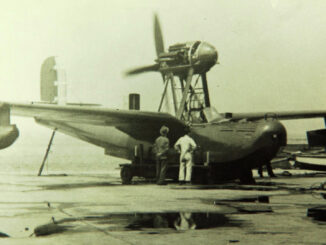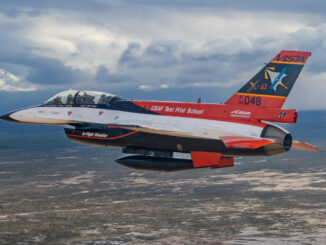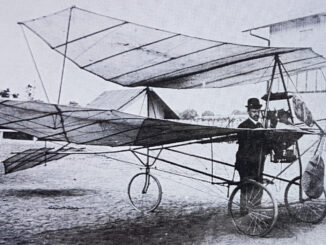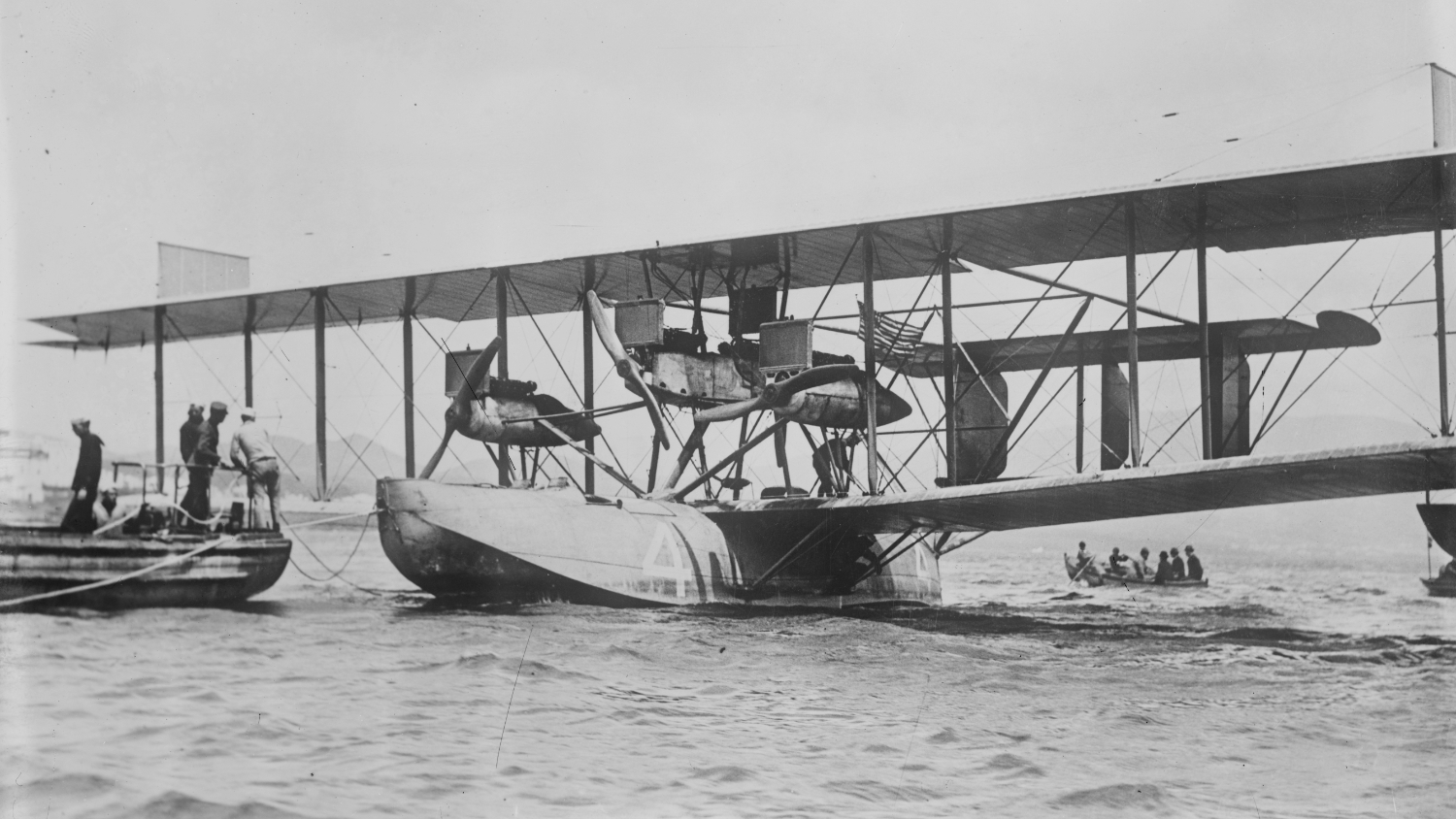 On 16th May 1919, three Curtiss NC-4 flying boats of the US Navy left Newfoundland and headed the Azores, in attempt for the first transatlantic flight of the powered, heavier-than-air aircraft.
On 16th May 1919, three Curtiss NC-4 flying boats of the US Navy left Newfoundland and headed the Azores, in attempt for the first transatlantic flight of the powered, heavier-than-air aircraft.
In April of 1913, the Daily Mail newspaper officially opened the transatlantic flight competition. The editorial office offered an award of 10,000 GBP – an equivalent of almost 1.5 million GBP in current value – to ´the aviator who shall first cross the Atlantic in an airplane in flight from any point in the United States of America, Canada or Newfoundland to any point in Great Britain or Ireland in 72 continuous hours´. The prize boosted some aviation pioneers to design aircraft able to fly across the ocean. However, the outbreak of the Great War stopped their works and caused the competition was suspended for a couple of years.
At the end of the war, the US Navy asked Curtiss Aeroplane and Motor Company to build an anti-submarine warfare aircraft able to perform long ocean patrol flights. Such a need resulted from war experiences and troubles that German submarines caused to Allied powers. One of the additional requirements was that, in case of any next war, the new aeroplane should be able to be delivered from America to Europe by air.
In 1918, drawing on the experience gained by working on their previous aircraft, the Curtiss team developed a flying boat, officially designated Curtiss NC – with N standing for the Navy and C for Curtiss – but commonly known as ´Nancy boat´ or just ´Nancy´. On 4th October 1918, the NC-1 successfully completed its maiden flight.
In order to prove the long-distance capability of the new flying boat, the Navy and the Curtiss company started their cooperation on transatlantic journey. Initially, it was planned that four examples of the aircraft – NC-1 to NC-4 – would fly across the Atlantic, however the NC-2 was damaged beyond repair during testing.
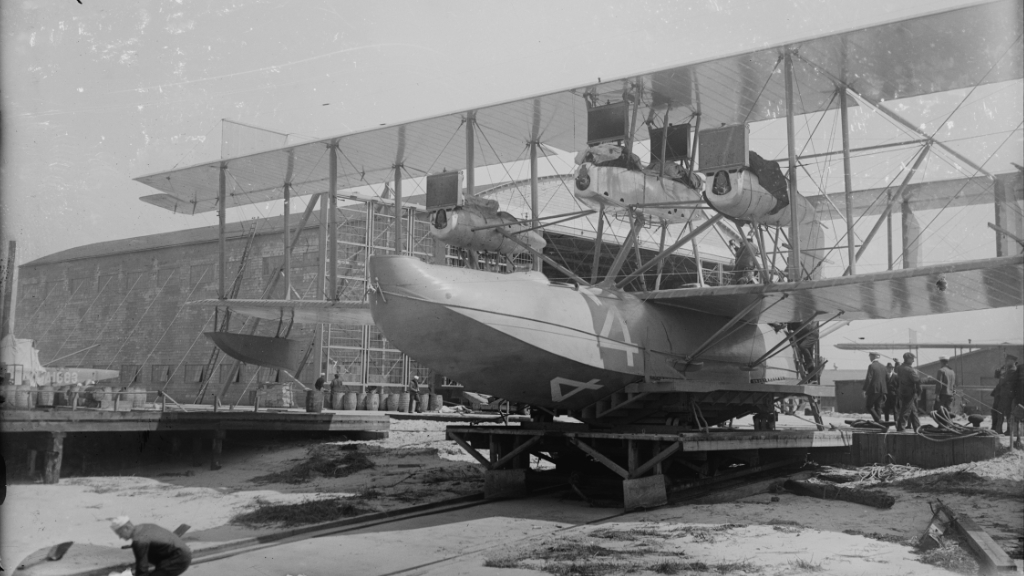
Therefore, on 8th May 1919, three Curtiss flying boats began their flight across the Atlantic Ocean. The route led from New York City, through Rockaway Naval Air Station, Massachusetts, Nova Scotia, Newfoundland and the Azores, to Portugal. Several US Navy ships were located along the way to help the crews to navigate, as well as support them in case of emergency.
On 15th May, the aircraft arrived to Newfoundland. On the following day the three flying boats began the most challenging part of the route, from Newfoundland to the Azores. However, during that leg, two aeroplanes were forced to land on the open sea because of severe weather conditions and mechanical issues. Only the NC-4 made it to Faial Island in the Azores after 15 hours and 18 minutes of flight. On 27th May, after completing some necessary repairs, the NC-4 flying boat took-off for the last leg to Lisbon. The aeroplane reached the capital of Portugal after 9 hours and 43 minutes of flight.
The Curtiss flying boat NC-4 was the first aircraft to fly across the Atlantic Ocean and, at the same time, the first one that flew from the North America to Europe mainland-to-mainland (officially beginning in Massachusetts and with final landing in Lisbon).
It took the NC-4 almost 11 days to fly from Newfoundland to Portugal, but the ´net´ flying time was just 26 hours and 46 minutes. That significant milestone in aviation history was made by the crew of Albert Cushing Read (commander), Walter Hinton and Elmer Fowler Stone (pilots), James L. Breese and Eugene S. Rhoads (flight engineers) and Herbert C. Rodd (radio operator).
More information about the pioneering transatlantic flights can be found in our article from July of 2023 – Across the ocean – astonishing stories of transatlantic flights.

Cover photo: Curtiss Flying Boat NC-4 in Ponta Delgada, the Azores, Portugal after its first transatlantic journey in 1919. George Grantham Bain Collection, Library of Congress, LC-B2- 4934-7 (cropped).

